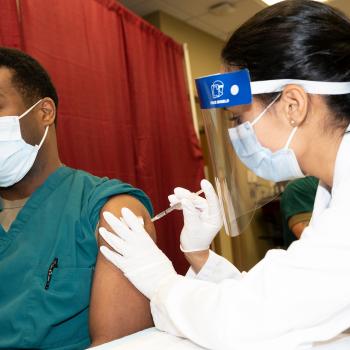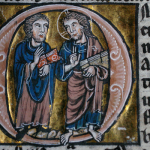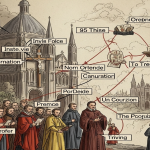In the celebration of Mass the chief ways in which Christ is present in his church emerge clearly one after the other. First, he is present in the very assembly of the faithful, gathered together in his name; next, he is present in his word, with the reading and explanation of Scripture in the church; also in the person of the minister; finally, and above all in the eucharistic elements. In a way that is completely unique, the whole and entire Christ, God and man, is substantially and permanently present in the sacrament. Presence of Christ under the appearance of bread and wine “is called real, not to exclude the other kinds of presence as though they were not real, but because it is real par excellence.” (Eucharistiae Sacramentum #6)
What the document Eucharistiae Sacramentum tells us here is of great importance for understanding the nature and value of Christ’s Eucharistic presence. Too often, conservatives treat Eucharistic presence in isolation from Christ’s presence in the congregation, the presider, and the word of Sacred Scripture. Liberals, for their part, are too often guilty of flattening out Eucharistic meaning so that Christ’s presence in the elements of bread and wine becomes indistinguishable from the other presences highlighted here. Both groups, of course, seem to find justification for their approach in the above-quoted passage and others like it.
It is rare to find a treatment of such a passage that uses Christ’s presence in the Word, the presider, and the congregation to help us understand Eucharistic presence. Instead, we see the first half of the passage used to relativize the Eucharistic presence, or the second half of the passage used to absolutize it.
What these two approaches have in common is that they both treat Christ’s Eucharistic presence and his presence in the word, in the presider, and in the congregation as discrete “units” of presence. Christ’s presence in the elements of bread and wine is seen as being in some kind of competition with the other types of presence. An authentically Catholic understanding of the Eucharist, on the other hand, understands Christ’s Eucharistic presence as the consummation of Christ’s relationship with his church, a relationship that necessarily includes the other types of presence referenced above.
In an analogous fashion, the consummation of a marriage presumes and requires a whole array of presences to one another that are not the consummation itself. Couples can be more really present to one another in love-making when they have been present to one another in the day’s labors, in shared joys and sorrows, and by small tokens of physical intimacy throughout the day – all rooted, of course, in their solemn vows of fidelity to one another. This does not deprive the marital act of its unicity. It merely serves to highlight that lovemaking, like the Eucharist, only makes sense in its proper context.
And this is precisely the reason that one must be baptized, that one must be in right relationship with God and the community (i.e., not in mortal sin), and that one must hear the gospel proclaimed if one is to receive the Eucharist: because our relationship with Christ in the Eucharist only makes theological sense when understood as the consummation of a relationship that necessarily includes life in the (ordered) community gathered and formed by the Word of God.
Christ’s presence in the Eucharist is certainly unique, but it is not independent. It only exists within the broader context of Christ’s relationship with his body, the Church. In fact, to call the Eucharist “source and summit” is to insist that it must always be understood with reference to the other aspects of our liturgical celebrations and the faith as a whole.
Brett Salkeld is a doctoral student in theology at Regis College in Toronto. He is a father of two (so far) and husband of one.












